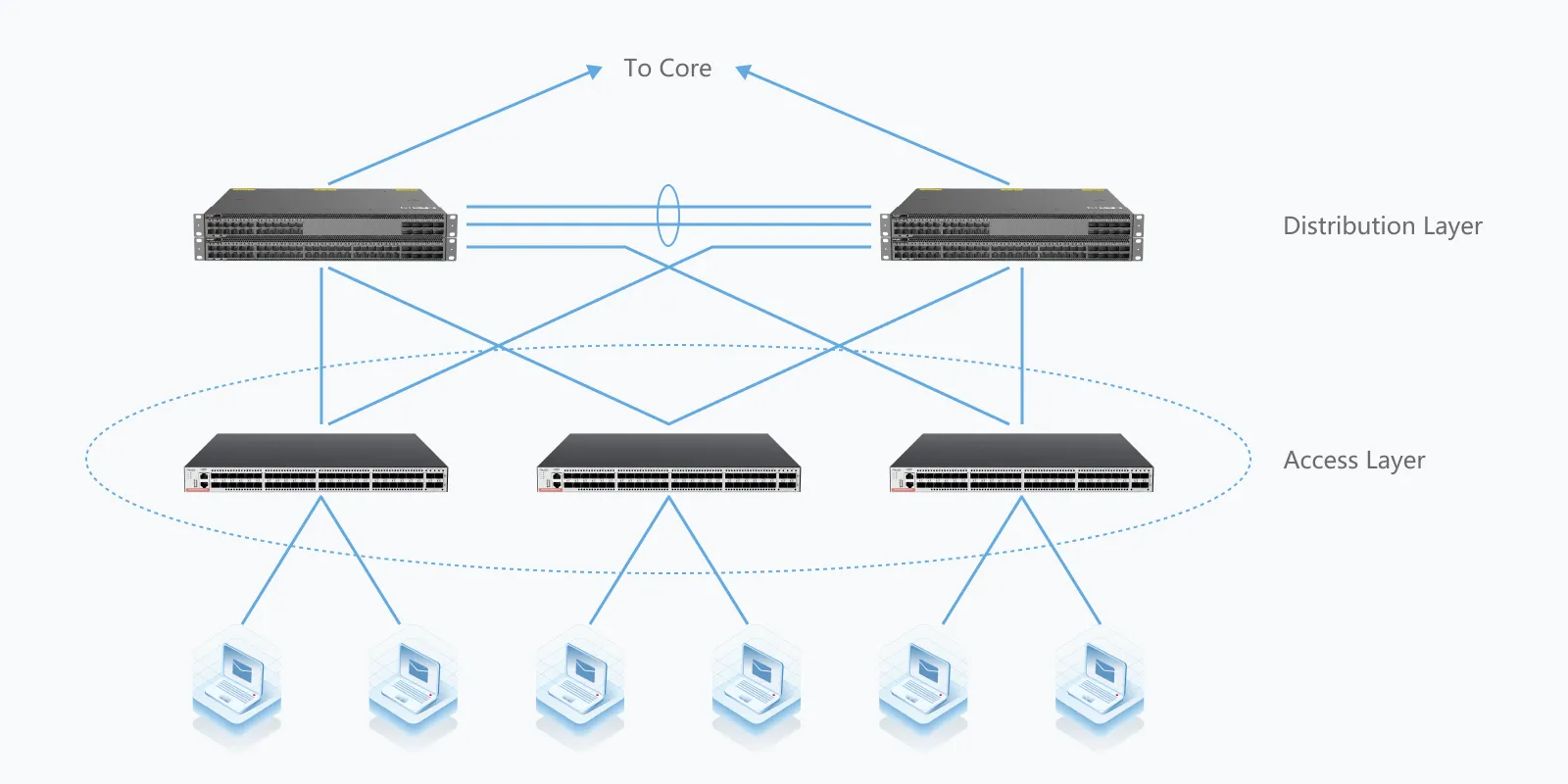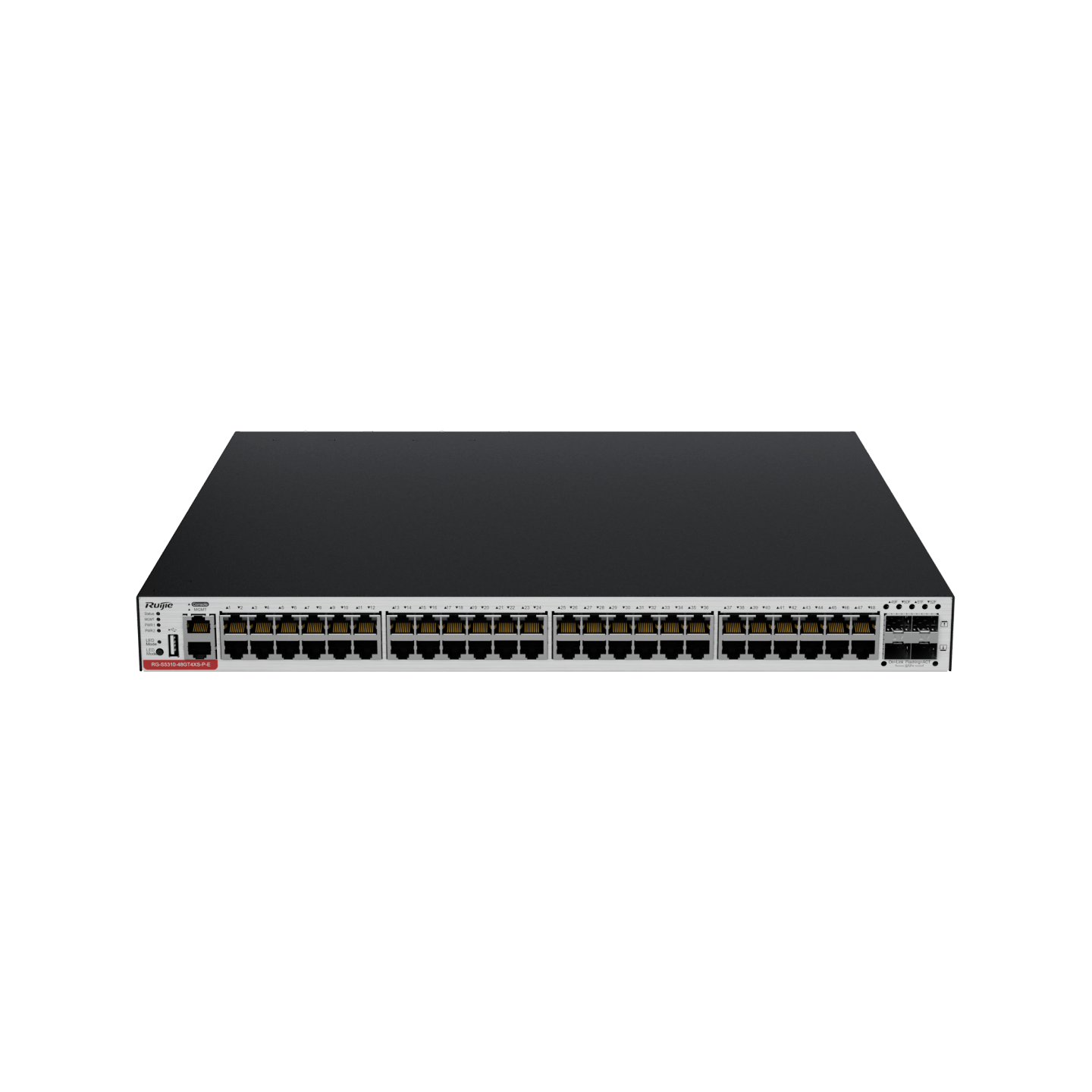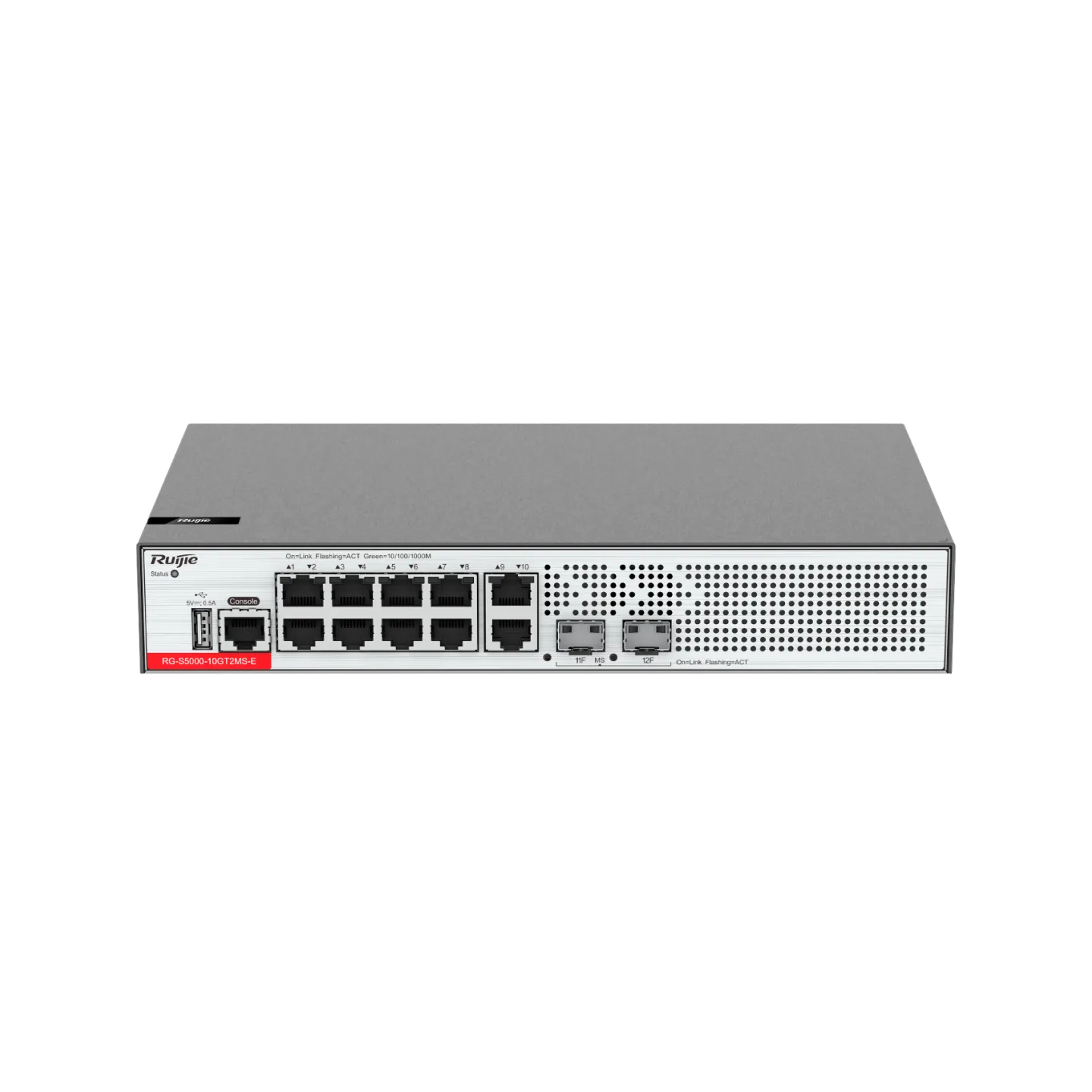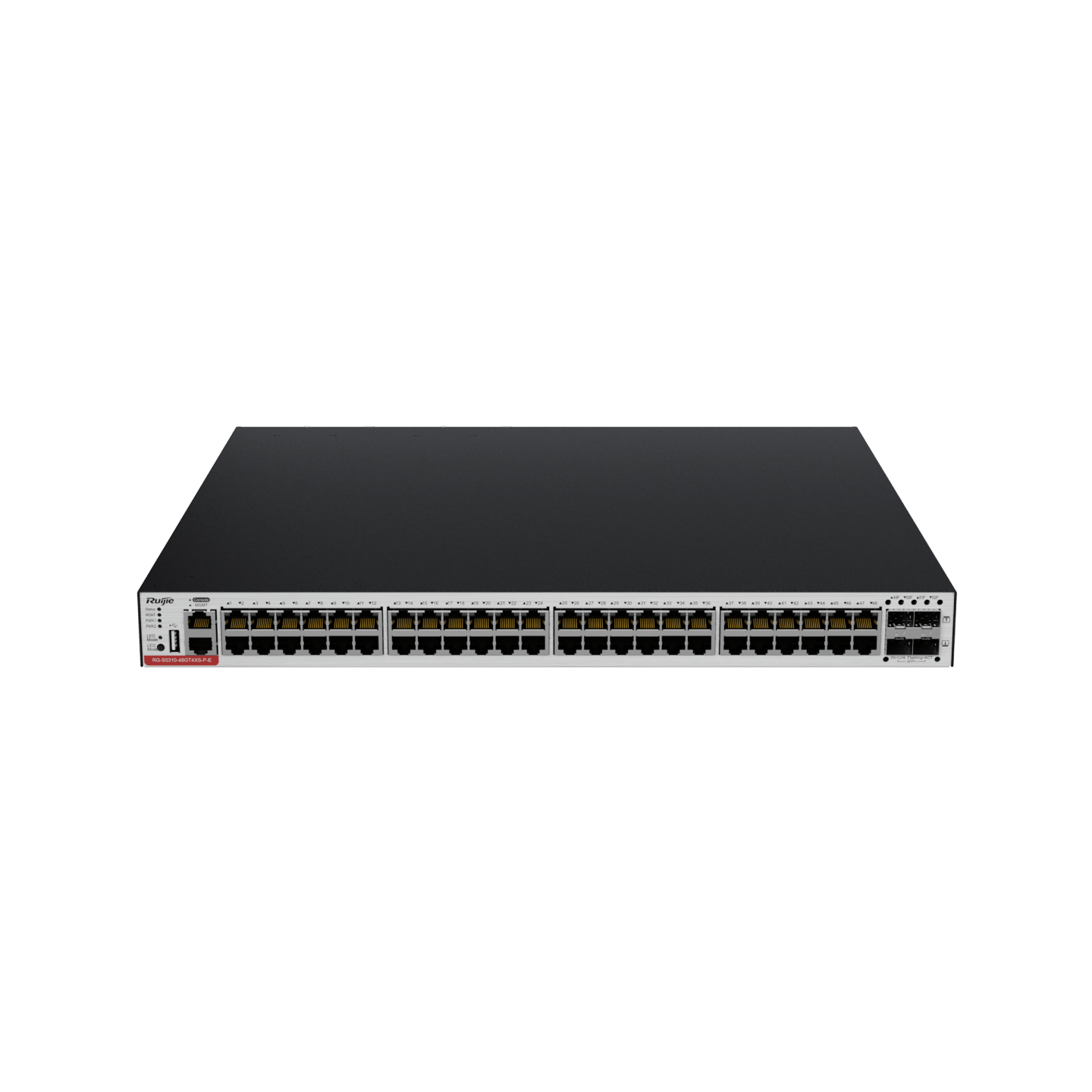As key components in a network architecture, access switches are fundamental and widespread in hierarchical network design. An access switch serves as an interface for end-user devices to connect to the network, providing essential data transmission services.
Access switches are known for their low costs and high port density, making them ideal for various application scenarios, such as offices, small equipment rooms, departments with frequent business activities, multimedia production centers, and web management centers. They connect directly to user devices and represent the part of the network that interacts most frequently with external users.
From a technical perspective, modern access switches usually have multiple adaptive Ethernet ports that support transmission rates of 10 Mbps, 100 Mbps, and 1 Gbps, catering to the diverse needs of users and devices. This flexibility ensures that the network can scale according to changes in traffic and the number of users.
I. Functions of Access Switches
In modern network architectures, switches play a crucial role. Access switches directly connect to end users and are at the bottom layer of the network architecture. They mainly connect customer equipment to a network and provide necessary data transmission services. Access switches are typically low-cost and have high port density to meet the access requirements of many end users.
II. Features and Applications of Access Switches
Access switches are designed for cost-effectiveness and ease of use and provide the following features:
●
High port diversity
: Access switches offer a range of port types, such as 10/100/1000BASE-T ports, to accommodate the diverse access needs of various devices.
● High port density design
: Access switches maximize the number of ports they can provide, minimizing space usage and reducing cabling complexity.
● Easy management
: Access switches support configurations on web UIs or the CLI, simplifying network management.
Access switches are widely used in small equipment rooms, offices, and website management centers.
III. How to Choose an Appropriate Access Switch?
To choose a proper access switch, you can consider the following:
●
Number and types of ports: Choose a switch that meets your requirements for port number and types (such as Ethernet ports or optical ports) based on the number of users and the device type.
● Performance specifications: Check the capacity and packet forwarding rate of the switch to ensure they meet the demands of network traffic.
● Security: Choose a switch that supports advanced security features, such as MAC address filtering, DHCP snooping, and IEEE 802.1X authentication.
● Energy-saving performance: Choose a switch that is Energy Efficient Ethernet (EEE)-capable and can reduce power consumption and improve energy efficiency.
● Expansion capability: Choose a switch with expansion slots or that supports stacking for future network expansion.
IV. Case Analysis: Ruijie Access Switches
The following two access switches of Ruijie Networks serve as examples to help you understand their features and application scenarios in depth.
The high-performance Ruijie RG-S5310-E series access switches are designed for the access layer. They feature superb performance, flexibility in port design, advanced security features, energy-saving design, and ease of management. They can provide full gigabit access and flexible and expandable 10 Gbps uplink data interaction capabilities.
The next-generation Ruijie RG-S5000-E series access switches feature cost-effectiveness and provide various port types to meet requirements in wired network, wireless network, surveillance, and other scenarios. They are suitable for commercial environments and small- and medium-sized enterprises, especially those requiring flexible port configurations and cost-effectiveness.
The design principles of security, efficiency, energy-saving design, and independent innovation are reflected in the preceding two series access switches, which provide users with solid network access solutions.
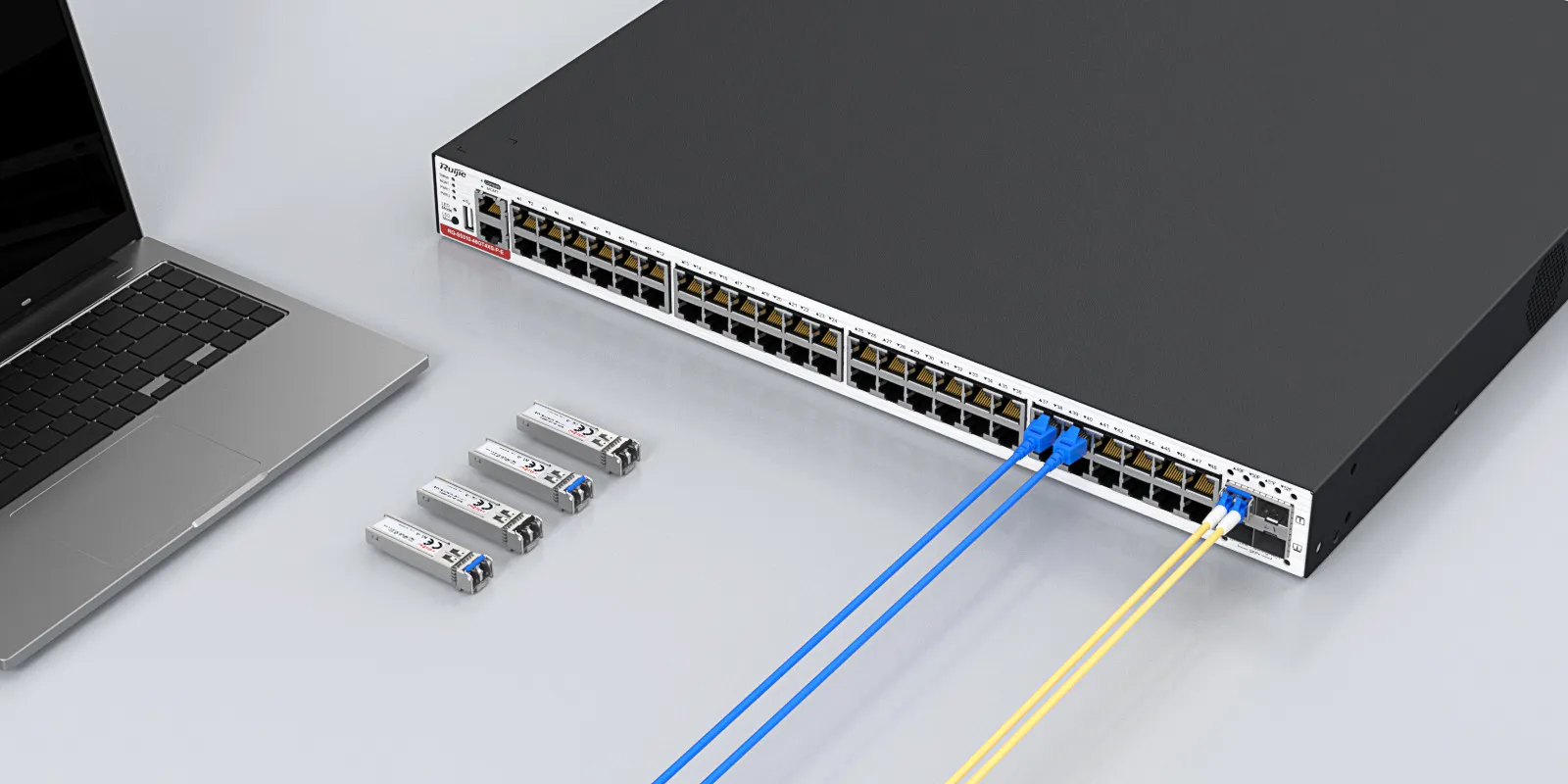

V. Conclusion
Selecting access switches is not only a technical decision, but also a crucial step in shaping the future network infrastructure of your enterprise. When making your choice, consider factors such as port requirements, performance specifications, security features, energy efficiency, and expansion capability. These factors are essential for ensuring the long-term stability of your network and its capability to support future business growth.
Ruijie Networks' RG-S5310-E and RG-S5000-E series switches offer exceptional performance and innovative design, providing tailored network solutions for enterprises of all sizes and needs. This document aims to give you a deeper understanding of how to select the right access switch for your organization.
Now, it’s time to put these insights into action. If you are seeking an upgrade or a cost-effective, secure network environment, do not hesitate to contact us for more information and professional advice. Our expert team will collaborate with you to assess your needs, plan your network, and deliver the best solution for your business.
Reach out to us. Let's embark on a journey to upgrade your network and unlock limitless connectivity possibilities for your business.
